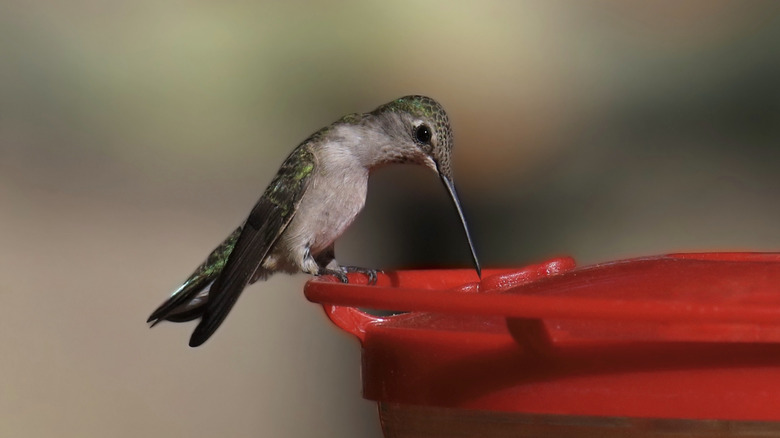Attract Hummingbirds With A Fast-Growing Ground Cover That Thrives In Sun Or Shade
It can be hard to keep hummingbirds coming back once spring blooms fade and nectar-rich plants stop flowering, but a fast-growing ground cover that blooms through the summer is the solution you're looking for. One drought-tolerant ground cover you can easily grow in your yard and garden is wild potato vine (Ipomoea pandurata), a type of morning glory. It grows in most soils and in both full sun and partial shade, which makes it a practical plant for most gardens in a range of climates and conditions.
Marlene Pantin, Plants for Birds senior manager with the National Audubon Society, discussed plants that attract hummingbirds to your yard in an exclusive interview with House Digest. "The best way to attract hummingbirds is to plant nectar-rich flowers in a variety of colors," she stated. "Hummingbirds are particularly attracted to red flowers and those with narrow, tubular shapes, but bright-colored blooms and flowers in orange, yellow, and pink are just as appealing to these tiny, fast-moving birds."
Wild potato vine blossoms are white, with a hint of reddish-purple inside the blossoms. Red and purple are colors that appeal to hummingbirds because of how their eyes see color. And wild potato vine has that tubular morning glory shape, which makes it easy for hummingbirds to feed from.
How wild potato vines support hummingbirds and your garden
Wild potato vine blooms during spring and summer, with fruit in summer and fall. One of the main reasons hummingbirds are steering clear of your yard is the lack of food, but the wild potato vine's value goes beyond simply supplying nectar to hummingbirds — the sprawling growth of the wild potato vine also provides ground cover and vertical interest for hummingbirds, growing up to 30 feet long through twining stems and tendrils.
"Choose native plants that have co-evolved with birds and other wildlife over time and are well-adapted to their local ecological area," Marlene Pantin said when speaking exclusively with House Digest. "Native plants can save homeowners money and time as they require less water and long-term maintenance than non-native plants." In the eastern U.S., the ruby-throated hummingbird plays a crucial role in pollination, and the tubular blooms of Ipomoea pandurata, a native eastern U.S. plant, have evolved with these birds to deliver large volumes of nectar in a way that matches their beak shape and feeding behavior.
Though the vine is generally pest-resistant, gardeners should be aware that its thick, tuberous roots can be difficult to remove once established, and it may reseed. Still, with smart placement and occasional pruning, wild potato vines are a wildlife-friendly alternative to invasive ground cover plants. Add a water mister or shallow bath nearby — Pantin also recommended feeders to supplement nectar — and you'll have a pollinator paradise that's easy to care for.

